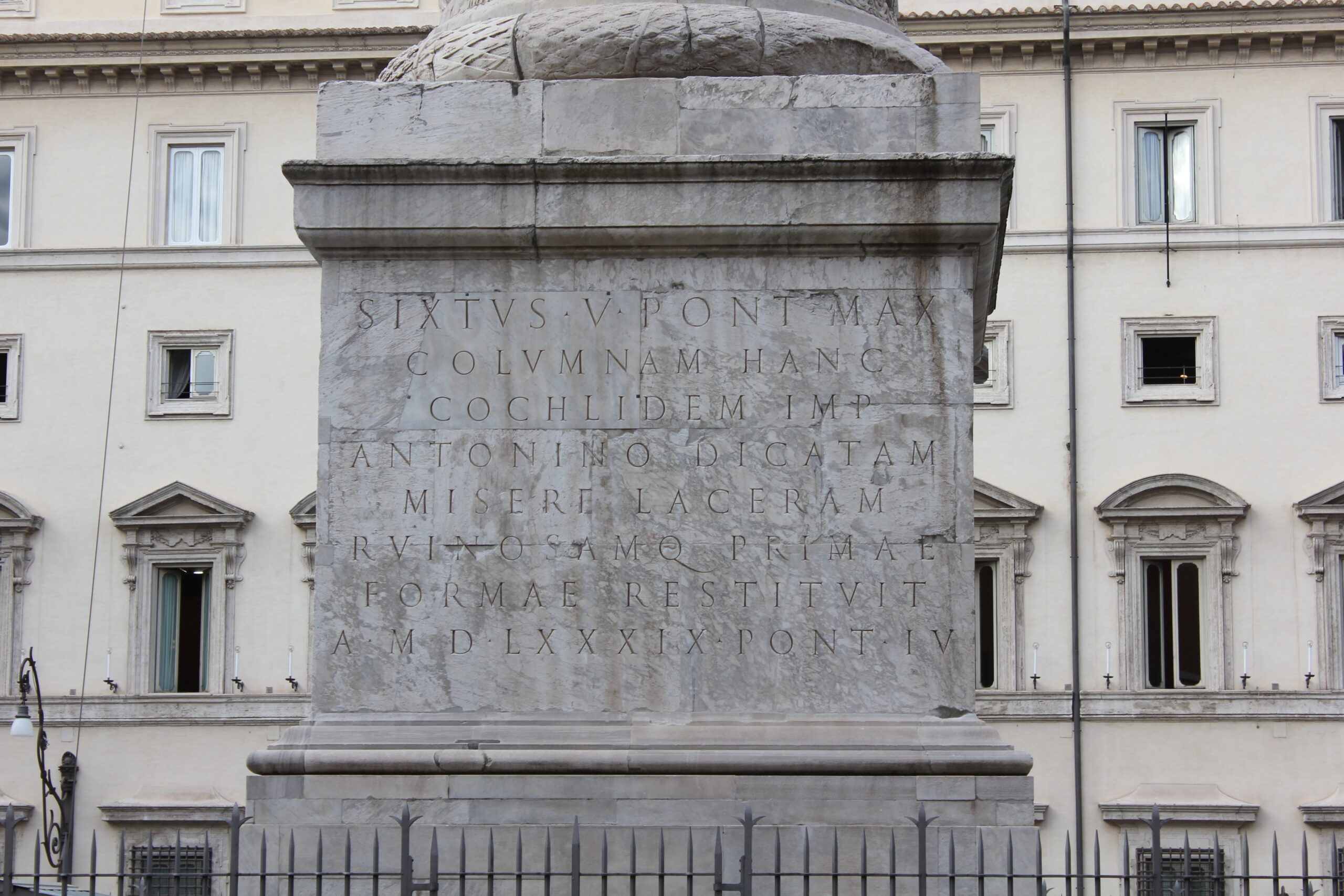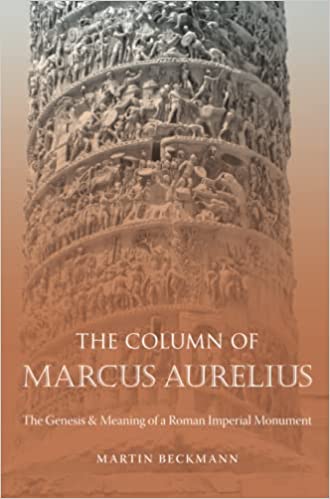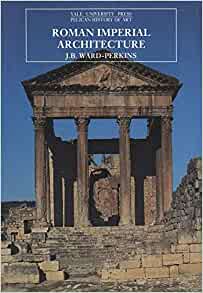The Column of Marcus Aurelius is a monumental column located in the heart of Rome, in Piazza Colonna, a short distance from Trajan’s Column, and close to Via del Corso, known as the Via Lata in antiquity. The column was completed in 193 CE to honor the Roman emperor Marcus Aurelius‘ victories in the Marcomannic Wars.
Similar to Trajan’s Column, the column is characterized by a spiraling frieze, with an internal staircase that leads to a viewing platform at the top. The column is known as a Columna Cholcis, meaning a ‘snail column’ due to its spiral design and internal staircase. It is also referred to as a Columna Centenaria as it stands at approximately 100 Roman feet or 30 meters in height.
The architect Apollodorus of Damascus designed both the columns of Marcus Aurelius and of Trajan. The carvings on the column were likely produced by a group of sculptors overseen by an artist named Cavallini.
Though the Column of Marcus Aurelius bears resemblance to Trajan’s Column, there are notable distinctions between the two. The frieze on the Column of Marcus Aurelius is more intricate and carved in what is now known as “deep relief,” making it more distinct and clearer to see. The frieze is 190 meters long and encircles the column 23 times, depicting more than 2,000 distinct figures. The reliefs illustrate the battles, soldiers, weaponry, and scenery of the wars in great detail, providing scholars with a vast amount of information about this era of Roman history.
The sculptures on the frieze of the Column of Marcus Aurelius are more dynamic compared to those on Trajan’s Column. Unlike Trajan’s Column, the frieze on the Column of Marcus Aurelius was not designed to be read chronologically from bottom to top. However, they do contain some similarities, such as depictions of the crossings of the Danube at the base and the goddess Victoria in the middle. The sculptors used shading and perspective to create an illusion of depth and movement, resulting in an overall visually striking and dynamic representation of the Marcomannic Wars.
The most celebrated scene of the frieze is the ‘Rain Miracle,’ the only scene that can be substantiated in another historical source. The incident took place during a confrontation between Marcus Aurelius’s army and the Quadi, during which the Romans were rescued by a divine rainstorm that provided them with hydration and brought down lightning on their enemies. The particulars of the event are indistinct, and it is uncertain whether Marcus was present or if it took place during a battle. Dio’s account suggests that the rain was potentially induced by the god Mercury at the request of Marcus Aurelius’s friend Arnuphis, an Egyptian magician.
The Column of Marcus Aurelius is an impressive structure that merges historical importance with artistic beauty. It is among the most well-preserved examples of a Roman triumphal column. Today, the column remains as a prominent symbol of Rome and a tribute to the accomplishments of ancient Rome.
Sources:
- Lancaster, L. (2013). Concrete Vaulted Construction in Imperial Rome: Innovations in Context. Cambridge: Cambridge University Press.
- Paoletti, J. T., & Radke, G. M. (2011). Art in Renaissance Italy. London: Laurence King Publishing.
- Beckmann, M. 2011, The Column of Marcus Aurelius: The Genesis & Meaning of a Roman Imperial Monument, UNC Press.
- Claridge, A. (2010). Rome: An Oxford Archaeological Guide. Oxford: Oxford University Press.
- Löhr, H. 2009, “Zur Botschaft und Datierung der Markussäule,” in Einicke, Lehmann, Löhr, A. Mehnert, G. Mehnert, & Slawisch (eds.), Zurück zum Gegenstand: Fetschrift für Andreas Furtwängler, Langenweissbach
- Kovács, P. 2009, Marcus Aurelius’ Rain Miracle and the Marcommanic Wars, Leiden.
- Coulston, J. C., & Dodge, H. (2000). Ancient Rome: The Archaeology of the Eternal City. Oxford: Oxford University Press.
- Wolff, H. 1994, “Die Markus-Säule als Quelle für die Markomannenkriege,” in Friesinger, Teral, & Stuppner (eds.), Markomannenkriege: Ursachen und Wirkungen, Brno
- Rodenwalt, G. 1936, “Art from Nero to the Antonines,” in Bowman, Garnsey, & Rathbone (eds.), The Cambridge Ancient History (vol. 11)
Bibliography & Further Reading
The best place for anyone interested in the Column of Marcus Aurelius (including myself while researching for this post) is Martin Beckmann’s The Column of Marcus Aurelius: The Genesis & Meaning of a Roman Imperial Monument (UNC Press, 2011). He does a marvelous job of laying out what we know about the column and of explaining the many intriguing debates and questions surrounding it.
A good portion of the scholarship on the column is in German. This is partly because of a wave of German interest in the late nineteenth century spurred by a visit from Kaiser Wilhelm II and scholars who were primarily interested in what the column could tell us about the Romans’ Germanic enemies. For those who read German, I’m including in the bibliography a few notable works that focus on the “Rain Miracle.”
– Beckmann, M. 2011, The Column of Marcus Aurelius: The Genesis & Meaning of a Roman Imperial Monument, UNC Press.
– Kovács, P. 2009, Marcus Aurelius’ Rain Miracle and the Marcommanic Wars, Leiden.
– Löhr, H. 2009, “Zur Botschaft und Datierung der Markussäule,” in Einicke, Lehmann, Löhr, A. Mehnert, G. Mehnert, & Slawisch (eds.), Zurück zum Gegenstand: Fetschrift für Andreas Furtwängler, Langenweissbach, pgs. 123-35
– Rodenwalt, G. 1936, “Art from Nero to the Antonines,” in Bowman, Garnsey, & Rathbone (eds.), The Cambridge Ancient History (vol. 11), pgs. 775-805.
– “Über den Stilwandel in der antoninischen Kunst,” Römische Mitteilungen, 37/7:58-110
– Wolff, H. 1994, “Die Markus-Säule als Quelle für die Markomannenkriege,” in Friesinger, Teral, & Stuppner (eds.), Markomannenkriege: Ursachen und Wirkungen, Brno. pgs. 73-83
Explore further:
This content is brought to you by The American Institute for Roman Culture, a 501(C)3 US Non-Profit Organization.
Please support our mission to aid learning and understanding of ancient Rome through free-to-access content by donating today.
Cite This Page
Cite this page as: Darius Arya, The American Institute for Roman Culture, “Column of Marcus Aurelius” Ancient Rome Live. Last modified 02/28/2022. https://ancientromelive.org/column-of-marcus-aurelius/
License
Created by The American Institute of Roman Culture, published on 02/28/2022 under the following license: Creative Commons: Attribution-NonCommercial-ShareAlike. This license lets others remix, tweak, and build upon this content non-commercially, as long as they credit the author and license their new creations under the identical terms. Please note that content linked from this page may have different licensing terms.




